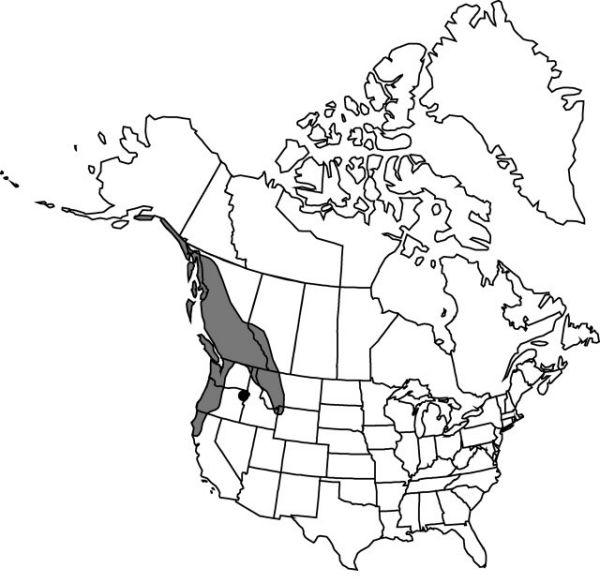Listera caurina
Erythea 6: 32. 1898.
Plants 5–30 cm. Stems green, succulent, glabrous. Leaves: blade green, ovate to elliptic, 2.5–7 × 1.8–4.5 cm, apex rounded to obtuse or subacute. Inflorescences 5–30-flowered, lax, 50–130 mm; floral bracts rhombic-ovate to lanceolate, apex acute to acuminate, glabrous to slightly glandular; peduncle and rachis glandular-pubescent. Flowers yellowish green, small; pedicel filiform, 4–12 mm, glandular-puberulent; sepals and petals distinct and free, spreading, only slightly reflexed; dorsal sepal linear-lanceolate to lanceolate, 2.8–4 × 0.5–0.8 mm, apex acute to acuminate; lateral sepals linear-lanceolate to lanceolate, falcate, 2.8–4 × 0.5–0.8 mm, apex acute to acuminate; petals linear to linear-lanceolate, slightly falcate, 2.8–3.5 × 0.5–0.8 mm, apex acute to acuminate; lip sessile, cuneate to obovate, 4.5–6 × 2–4.5 mm, apex rounded to retuse, apiculate, apical margin slightly erose or crenulate; disc with pair of dark green stripes, each swollen at base and with small horn 1 mm from top of each swelling; column short, 1.5–2 × 1 mm. Capsules semierect, ovoid to subglobose, 5 × 4 mm, glabrous. 2n = 34.
Phenology: Flowering late Apr–Sep.
Habitat: Dry litter of mixed and coniferous forests, dense moist, coniferous forests, and on boggy wooded slopes, also damp to wet conditions on moss-covered rocks or in mossy soil
Elevation: 100–2200 m
Distribution

Alta., B.C., Alaska, Calif., Idaho, Mont., Oreg., Wash.
Discussion
Selected References
None.